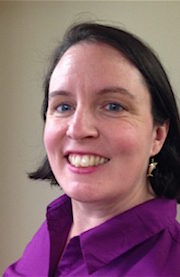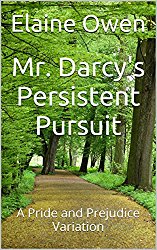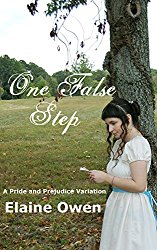York Vs York: Changing Attitudes in Regency England
In April, Elaine Owen shared this piece on Austen Authors. I thought it worthy of a second look.
Jane Austen did not write about disabled people in any of her books, but people with disabilities were just as common in Regency England as they are today. Whether the disability was physical or cognitive, people back then wanted to care for their loved ones who needed extra assistance or intensive support, just as we do now. How did they do it? The story of the York Lunatic Asylum vs the York Retreat gives us some important insight.
Most disabled people were cared for at home or in their home community if at all possible. Keeping the disabled person in a familiar setting and among people who loved them was undoubtedly the best option for families with enough money to do so. But what did society do with those poor unfortunates whose families did not or could not care for their family member, especially a “lunatic” family member? (“Lunatic” might include anyone with a mental disability or disorder, from severe depression to schizophrenia to autism and the like.) Who took care of them?
In Austen’s day there were a number of “asylums” which took in those who could not care for themselves. Sometimes these were funded by the government and sometimes they were run with private funds. Wealthy families occasionally paid for one of their loved ones to be cared for at these institutions, but most inmates were poor, and naturally, the poorer a patient was, the worse their care was likely to be. The common view was that “lunatics” had the minds of animals, and so they should be confined and controlled. There was little hope given for any improvement.

The York Lunatic Asylum was founded in 1777 and typified this approach to the disabled. Fortunate patients from wealthy families were relatively well-treated while poor patients suffered through straightjackets, restraining chains, inadequate food, and little supervision or protection. But all patients, even wealthy ones, were subject to such “treatments” as purges and cold baths. Deaths among the poor patients were common but they were not reported. Since the asylum was private there were no government inspections, and so there was no way to evaluate how well “treatment” was working, or if there was any attempt at treatment at all.
In 1792 a young Quaker woman suffering from what we would now call chronic depression was admitted to the York Lunatic Asylum. Six weeks later, she was dead. Her fellow Quakers investigated her death, and when they discovered the horrifying conditions under which she died, they decided to do something about it. They founded their own asylum called the York Retreat.
At the York Retreat, treatment was based on the idea that “lunatics” had souls. Therefore the Quakers believed that the disabled deserved to be treated like human beings, not dumb beasts. Few restraints were used. Patients were encouraged to participate in outdoor activities, to practice simple arts and crafts, and to do productive work in the community. This basic philosophy, so revolutionary in its day, gradually became the operating philosophy for “lunatic” homes around the world. To this day the York Retreat model drives how we as a society try to treat the mentally disabled.

Meanwhile the Quakers were not done with the York Asylum. They were not content to allow other patients to suffer under the brutal conditions they had found inside the institution. Instead they managed to get a leading Quaker appointed as one of the patrons of the asylum, and in 1814 they were successful in bringing about a parliamentary inquiry into abuses at the hospital.The leadership and staff of the hospital were completely replaced and the asylum began to follow the kinder, gentler practices of the York Retreat. In following decades the asylum name changed to Bootham Park. Gradually it evolved into a modern psychiatric hospital. It closed in 2016.
The York Retreat continues operating today. It specializes in treating those with complex mental disorders like dementia, PTSD, autism, etc..
It’s interesting to think how Darcy and Elizabeth might have reacted to having a child with a disability, and how they would have viewed the rise of institutions like the York Retreat. I’d like to think that they would have made sure that any disabled child of theirs would enjoy a full, integrated life at Pemberley. And I’d love to see a story where Elizabeth champions the rights of the disabled and perhaps becomes a sponsor of the York Retreat.
As the mother of an autistic woman I am fascinated by how far we have progressed in our treatment of those with mental disabilities, and by how much some things have not changed. We still fight for people with disabilities to be looked at as human and worthy of inclusion in society. Perhaps that is a battle that will always have to be fought.
For further reading: A History of Disability
______________________________
As a footnote, we have an excerpt from a piece on Jane Austen’s brother, George. It comes from Jane Austen’s World:
George Austen, Jane’s second oldest brother is an enigma, rarely glimpsed and hardly known to the world. No image exists of him, which is why the image I used for this post has no face to speak of. George Austen was thought to be mentally or physically impaired, or suffering from an infirmity. Nearly ten years older than Jane, Claire Tomalin wrote that he still lived in Steventon village in 1776 (See Boris’s comment in the comment section) and that the very young Jane knew him.
“He could walk, and he was not a Down’s Syndrome child, or he would not have lived so long, lacking modern medication. Because Jane knew deaf and dumb sign language as an adult — she mentioned talking “with my fingers” in a letter of 1808 — it is thought he may have lacked language; it would not have stopped him joining in the village children’s games.” – Claire Tomalin, Jane Austen, A Biography.
_______________________________________
 Meet Elaine Owen: In 2014, Elaine began to write Pride and Prejudice fan fiction and decided to publish her works herself to see if she might possibly sell a few copies. Thousands of books later, the results have been beyond her wildest hopes, and she plans to continue writing fiction for the foreseeable future.
Meet Elaine Owen: In 2014, Elaine began to write Pride and Prejudice fan fiction and decided to publish her works herself to see if she might possibly sell a few copies. Thousands of books later, the results have been beyond her wildest hopes, and she plans to continue writing fiction for the foreseeable future.
When she’s not writing her next great novel, Elaine relaxes by working full time, raising two children with special needs, and earning a third degree black belt in karate. She can be contacted at elaineowen@writeme.com. Look for her on Facebook!









Pingback: People with Disabilities in Jane Austen’s England, a Guest Post by Elaine Owen | ReginaJeffers’s Blog | First Night History
Very interesting post, thank you for sharing. I always thought it was interesting that Jane and her brother George were the only two of the family to not have portraits made (that I am aware of).
Paula, Elaine has a follow up post on Austen Authors that deals with Austen’s brother George. http://austenauthors.net/o-brother-where-art-thou/
Thank you, I will check this out.
Austen addressed feminism, slavery, and a host of other means of discriminative issues brought about by social stratas. I often wondered about the lack of representation PWD received in her novels when her brother evidently suffered from some form of mental illness – that whether it was because the subject hit too close to home or because her family advised against it. We know how close knitted she and her siblings were and yet George was almost kept a virtual secret.
As people were committed to Bedlam for what we would now consider nothing that could not be addressed at home, bringing light to the subject (most did not understand) might be forcing the Austen family into a situation best avoided.
Regina, thank you for reproducing my post here. With a daughter on the autism spectrum the subject of people with disabilities in the Regency era is of great interest to me. It’s always interesting to imagine how different her life would have been had she been born in a different era. We have a lot to be thankful for.
Elaine, both my masters and my Ph.D. are a reading specialist. I have dealt often (over my 40 years of teaching) with those on the autism spectrum. Usually, I was called on to deal with those with Asperger’s.
In my books, I have had those with Downs’ syndrome and those with autism, but with not-so-obvious symptoms such as OCD. One of my heroines counts all her steps, for example.
Most interesting. Thank you.
Pingback: Jane Austen’s “Invisible” Brother, a Guest Post from Elaine Owen | ReginaJeffers's Blog